Category: Construction Maintenance Electrician
How to Craft a Great Resume After Completing Electrician Training
October 12, 2021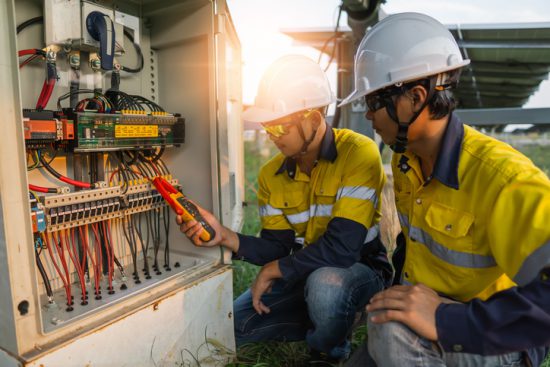
If you’re about to complete your electrician training, you’re probably gearing up to apply for jobs in the electrician industry. While the job application process can seem intimidating, once you know how to put together a great resume, you’ll be able to succeed in launching a rewarding career. During your training, you’ll have built the skills and gained the qualifications necessary to perform a variety of tasks as a construction and maintenance electrician. Not only should your resume reflect that you have what it takes to be an asset to any organization within the industry, but it should help you to stand out amongst other candidates and catch the attention of potential employers. Below, discover a few tips that will help you to create a strong, industry-aligned resume as a future electrician.
After Electrician Training, Don’t Forget to Format Your Resume Correctly
When putting together your resume, one of the biggest mistakes you can make is to neglect to format your resume correctly. When searching for the right candidate, employers may look over hundreds of resumes in a short span of time. Thus, your resume should be formatted in a way that makes it easy for a potential employer to read. When formatting your resume after electrician training, make sure to include a header that includes your name and contact information, followed by clearly labeled sections. Within each section, there should be clear spacing between separate items, and bullet points should be used when listing details such as skills or descriptions of activities and experience.

Include a Summary of Your Qualifications
The goal of your resume is to catch the attention of potential employers, and there’s no better way to do this than with a brief summary of your skills and qualifications at the top of the page. Including a summary of your qualifications gives a potential employer an idea of who you are as a candidate, and lets them know why you’re qualified for the position you’re seeking. Depending on the job description, you can tailor your summary to highlight what makes you a good fit for the particular position.
Detail the Skills You’ve Gained in Electrician Training
Within your resume, you’ll also want to include a list of the skills you’ve built in electrician training. Including a list of skills will help employers to identify why you’re qualified for a particular position, and verify that you’re well-trained as a future electrician. It is important to make sure your details are results-oriented–to show what kind of skills you can offer. Skills to consider putting on your resume might include residential wiring, code interpretation, print reading, conduit bending, service installation, machine control repair, and more.

Tailor Your Resume to the Job Listing
After completing your training at electrician college, it can be tempting to send the same resume to each position you apply to. After all, the job application process can be plenty of work. However, it’s crucial to tailor your resume to the specific job you’re applying for. You’ll want to make sure that the skills and qualifications you’re including in your resume are those which align with what the employer is seeking. Using keywords listed in the job posting can help you make your resume more specific to the position you’re applying to. Tailoring your resume will help employers to recognize how your specific skills and qualifications make you a great fit for the job at hand, increasing your chances of success in the process.
Are you ready to enroll in electrician school?
Launch your career with a program at the North American Trade Schools today!
4 Interview Questions to Expect After Construction School (& How To Answer Them)
September 16, 2021
Ready to launch your career as a construction electrician? Preparing for your job interview is one of the best ways to increase your chances of success. When you arrive at the interview stage, your potential employer has already seen your resume. This means they already know you have the skills and experience necessary to take on the job at hand. So what’s the point of an interview? It’s your golden opportunity to show an organization that you’re not only a good fit for the role you’re applying for on paper. You’ll get to tell them why you’re perfect for the job based on your character, commitment, work ethic–and any other professional talents you think they need to hear about!
Below, discover four common interview questions that you should prepare to be asked when applying for a job as a construction electrician.
1. What Made You Choose a Career in Construction?
Employers want to know what motivated you to enter a career in construction, as this will tell them more about who you are as a person and how committed you are to the industry. When answering this question, it’s important to be honest–while emphasizing why you’re passionate about working as a construction electrician. Did you always know you were going to become an electrician? Tell your potential employer why. Do you enjoy being challenged and solving complex problems? Don’t forget to let your interviewer know what excites you about this career path. By answering honestly, your passion for the role will shine through–which will impress prospective employers.

2. What Do You Know About Our Company?
In almost any field, it’s likely that an interviewer will ask a candidate what they know about their company. This question is meant to test your knowledge of the organization you’re applying to work for. Interviewers want to know that you’ve researched their company. This demonstrates your interest in the position and let’s them know that for you, this isn’t just another job. Prepare for this question by conducting plenty of research on the company before arriving at the interview. You’ll want to familiarize yourself with the organization’s mission, values, their history, the services they offer, and any other relevant information.
3. Where Do You See Yourself in the Next Five Years?
If you’re interviewing for a position in the construction trades after completing your training, you’ll want to come to an interview prepared to explain your future career plans. A hiring organization wants to know that the person they’re planning to hire has an idea of how they want to advance throughout their career. When answering this question, talk about how the position you’re applying for will equip you with the skills you’ll need to succeed in attaining your career goals. Showing your potential employer that this job is a step in the right direction for you assures them that you’ll be committed to their organization for a longer period of time.

4. Do You Have Any Questions for Us?
Don’t mistake this seemingly “easy” question for one that isn’t important. When an organization asks an interviewee whether they have any questions, they’re gauging your interest in the role. Coming prepared for an interview with a list of questions based on the research you’ve conducted is a great way to show an organization that you’ve given this opportunity plenty of thought. Asking questions also shows that you’re taking the process seriously.
Before your next interview, study these questions and come up with some thoughtful answers. When you arrive prepared, you’ll be sure to succeed!
Are you considering attending construction school?
Launch your career with a program at the North American Trade Schools today!
The Principles of Electricity Explained for Electrician College Students
August 27, 2021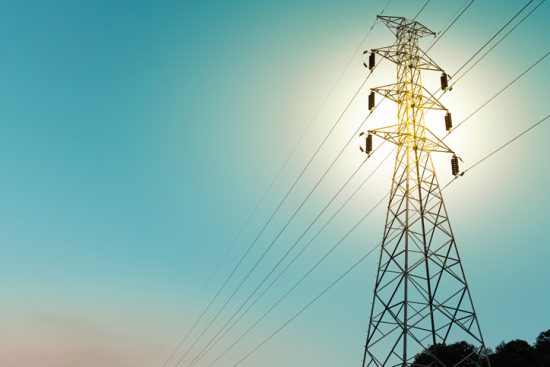
If you’re considering launching your career as an electrician, you’ll use your knowledge of the principles of electricity to accurately install and repair electrical systems–as well as diagnose and troubleshoot electrical problems. Construction and Maintenance Electricians are equipped with the skills to perform a variety of different functions. Some may include: service installation, conduit bending, code interpretation, print reading, machine and electronic control repair, and more. As a Construction and Maintenance Electrician, understanding the principles of electricity will be important to your success. It will help to determine how the electrical systems you’re working with operate, and what the best solution is to any problems that may arise. Below, discover an introductory guide to the principles of electricity.
Where Does Electricity Come From? A Guide for Students in Electrician Training
Essentially, electricity is a secondary source of energy that’s created from the conversion of other sources of energy. Electricity is made up of atoms, which contain a nucleus composed of protons and neutrons. Around the nucleus are electrons, which revolve around the nucleus due to their attraction to protons and electrons. These respective particles contain an electrical charge, as protons are positively charged and electrons are negatively charged. Orbiting electrons that don’t have a strong attraction to the protons in one atom will be pushed out of the rotation and into another atom’s orbit. Electricity is the result of this shifting pattern. After completing your electrician training, you’ll be using this knowledge of electricity to inform the work that you do on the electrical systems within residential and commercial buildings.
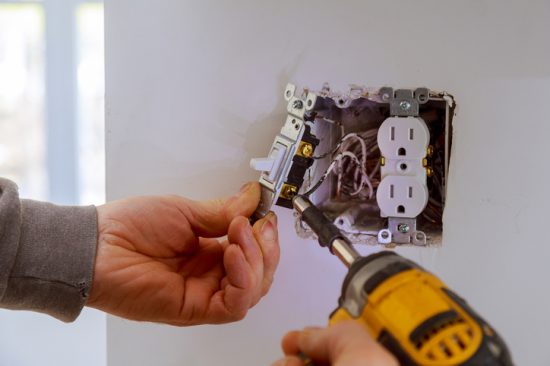
The Electricity Generation Process
The electricity that’s used in residences and other buildings can be created in many ways, but some of the most common sources of electricity generation are coal, wind, and nuclear energy. Coal is burned at an extremely high generator, creating steam which passes through a turbine. The turbines are equipped with a generator–containing coils that rotate within a magnetic field to create electricity. Wind energy is created when wind turns the blades of wind turbines, spinning a shaft connected to a generator which creates electricity. Nuclear energy is produced within power plants, where an atom is split through the process of nuclear fission to create energy. This energy is used to produce heat, and the steam created by this heat generates electricity.
After this electricity is generated, it’s then delivered to consumers via different power lines that make up an electricity grid. Electricity grids connect electricity producers to consumers using substations, transformers, and power lines. As a graduate of electrician college, you’ll be working with the electricity delivered to these residences and commercial buildings.

Terms to Know Surrounding the Principles of Electricity
When learning about the principles of electricity, learning a few basic terms will enhance your understanding of how electricity works.
- Coulomb: A coulomb is a unit of electric charge
- Ampere (Current): Flow rate of an electric current
- Ohm: The unit of resistance within a conductor, determined by temperature, material and size.
- Resistance: Measured in Ohms is the electromotive force needed to pull electrons away from protons within an atom.
- Volt: Measure of the amount of electromotive force needed to push one ampere through a conductor.
- Ohm’s Law: Used to explain the relationship between current, resistance, and voltage. According to Ohm’s Law, the current is equal to the voltage divided by the number of Ohms.
- Watts: A unit of electrical power, equal to the number of volts multiplied by the current.
- Ampacity: The maximum amount of current that a conductor can handle.
Once you master an understanding of the terms used to measure electrical currents and charges, you’ll be able to use this knowledge to install, repair, and maintain electrical systems.
Ready to enroll in electrician school?
Explore your options with a program at the North American Trade Schools today!
If You’re in Construction College, Here’s What You Need to Know About Electrical Motor Theory
July 20, 2021
Working in the electrical industry requires knowledge of one of the fundamental components of modern construction: electric motors. From power tools to household appliances to industrial applications, electric motors are found everywhere. Essentially, an electric motor is a machine used to convert electrical energy into mechanical energy. Electricity is passed through a coil to produce the power to drive a machine.
Given their availability in today’s world, knowledge of the theory and application of electrical motors is essential for anyone hoping to pursue a career in the field of electrical construction. Skilled professionals should have a complete understanding of electrical motor theory and its application in residential, commercial, and industrial systems. If you’re considering a career as a construction and maintenance electrician, here’s a quick look at the fundamentals of electrical motor theory!
How Do Electric Motors Work?
The electric motor works according to an interaction between the electric current and the magnetic field, which generates a force to make the shaft rotate. In other words, when an electric current passes through a coil, a magnetic field is generated that causes the coil to rotate on its own axis. Most electric motors today work according to this principle of electromagnetic induction. The mechanics of a generator work in much the same way as an electric motor – however, a generator works in the opposite direction, converting mechanical energy into electrical energy.
Students in construction college learn the principles and applications of electricity to prepare them for competitive careers as electrical control assemblers, electrical technicians, and more.
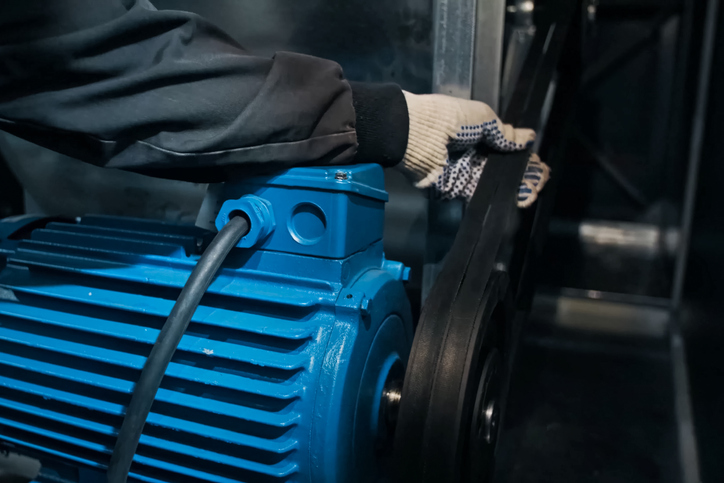
Types of Electrical Motors
Electric motors can be classified according to their power source, construction, motion output, and application. Typical motors are equipped to provide sufficient mechanical power for industrial uses in pumps, fans, power tools, and disk drives. Today, the most commonly used electrical motors are AC motors and DC motors.
DC (Direct Current) motors are widely used because they come with a pre-existing power distribution system. Their speed can be adjusted through the intensity of the electric current. The ability to control the speed makes them a popular choice for home appliances, vehicles, and elevators.
AC (Alternating Current) motors are able to reverse the direction of the electric current at regular intervals. This type of motor uses magnetic forces to propel the current through the device. The current creates a rotating magnetic field that can move the rotor. With a low starting power and controlled acceleration, AC motors are suitable for instrumentation and industrial applications.
Trained electricians pursuing a career in construction will be able to distinguish the appropriate uses of different types of electrical motors.

Advantages of Electrical Motors in Construction Careers
In application, electric motors have several advantages over normal engines. When it comes to their comparative power, the horsepower rating is similar – however, the cost of electric motors is significantly lower than fossil fuel engines. These motors also don’t use fuel, nor do they require the maintenance of engine oil. In that sense, electric motors require little maintenance with a lifespan of up to 30,000 hours if maintained properly. Not to mention, electric motors can be widely used across different appliances, including machine tools, ships, paper mills, motor vehicles, as well as heating and ventilation systems. With knowledge of the fundamental workings of electric motors, students in construction are prepared for a modern and practical career path.
Are you interested in construction careers?
Contact NATS today to learn more about our program!
Considering Electrician Training? 5 Benefits of Being Your Own Boss
June 08, 2021
After completing their training and gaining a few years of experience, many electricians choose to open their own business. While starting your own business comes with its own set of challenges and hard work, there’s a reason that so many electricians choose to take on this endeavour. Opening your own electrician business can be extremely rewarding, and nothing beats being your own boss.
If you’re considering whether it’s worth it to start your own electrician business, read on to discover five benefits of this exciting venture.
1. If You Start Your Own Business After Electrician School, You’ll Have More Independence
While working for another contractor can offer stability, owning your own electrician business offers an appealing level of freedom. You can choose what jobs you take, and you’ll be in charge of making your own decisions about a project based on your personal assessment. When you open your own business after electrician training, you’ll also be able to decide which services to specialize in. Not only does this level of independence offer you more freedom throughout your career, it also allows you to define your approach to business on your own terms.

2. When You’re Your Own Boss, You Have More Flexibility
It’s often difficult to find a work-life balance throughout your career. For many electricians employed by a company, their schedule is dictated by the demands of their superiors, giving them less flexibility in their day-to-day lives. Opening your own electrician business allows you to make your own schedule, giving you the opportunity to take time off when you need it and leading to more flexibility. Only want to work four days a week? Starting your own electrician business gives you the option to structure a schedule that allows for it.
3. You’ll Potentially Have the Opportunity to Earn More
While most electricians can’t complain about their salary, there are limits to what an electrician can make by doing contracted work. If you decide to start your own business after electrician school, you’ll be able to enhance your own success by setting your own prices. As your business grows, you’ll see the financial rewards increase too.

4. You Have the Freedom to Innovate
After gaining some experience as an electrician, it’s likely that you’ll notice a few processes and procedures which could be improved upon. Although you might not have the opportunity to make beneficial changes to a company’s policies while doing contracted work, opening your own electrician business allows you the freedom to innovate. You can set your business’ goals, develop your own working standards, and create a system that suits you and your clients’ needs.
5. You’ll Be Directly Impacting People’s Lives with Your Business
Everyone requires the services of an electrician at some point in time. There’s nothing better than the feeling of a job well done, and the look on your clients’ faces when they see the results of the work you’ve completed for them. Additionally, you’ll be able to employ other electricians, making a difference in their lives by providing them with a great job.
Ready to enroll in electrician college?
Launch your career with a program at the North American Trade Schools today!
5 Tips for Improving On-Site Safety for Professionals in Construction Careers
May 04, 2021
At any construction site, it’s important to take the proper precautions to avoid accidents at all times–especially when dealing with electricity. Electrical safety is one of the primary safety concerns within a construction site due to the risks electricity poses. If you’re considering a career as a construction and maintenance electrician, read on to discover five different ways to improve on-site safety during your career.
1. Those in Construction Careers Should Wear Personal Protective Equipment
Wearing personal protective equipment is the most important step that individuals can take to ensure their safety when working on a construction site. Within an area of electrical work, those in construction careers should wear footwear and gloves. When working in the vicinity of electrical wiring, a worker’s personal protective equipment should also include fire-resistant helmets and face shields in order to provide defense against potential shocks. While the level of protection depends on the amount of electricity a worker is exposed to, suiting up in proper personal protective equipment is always necessary when working on any construction site.

2. Choose the Right Testing Equipment
When working with electricity, using high-quality testing equipment is essential in order to assess the risk involved in any operation. Testing equipment, such as: receptacle testers, voltage detectors, and clamp metres, should be used in order to check wiring. This is to determine whether it’s grounded, dead, or requires safety gear. Using testing equipment is essential in preventing potential electrical accidents.
3. Use Circuit Breakers and Voltage Regulators to Avoid Electrical Issues
Accidents can happen despite taking preventative measures. If you’re seeking a career in construction, it’s important to be able to manage a potential crisis in order to prevent further damage. The best way to respond to emergencies is to use voltage regulators and circuit breakers. These devices will regulate power and protect against equipment damage in the event of a short circuit, a power surge, or another problem.

4. Determine Electrical Hazards Through Proper Signage
On a construction site, a lack of awareness of potential electrical hazards may lead to electrical accidents. Project management software can be used to identify and track electrical hazards as they arise throughout the construction process. After the identification process, proper signage should be used to inform workers where electrical hazards are located within a construction site. Signage should include easy-to-read illustrations and language in order to ensure that all workers can understand the present risks. Utilizing proper signage throughout a construction site will improve safety and reduce the danger that on-site workers are exposed to.
5. Never Work in Wet Conditions
Anyone familiar with electricity knows that when water comes into contact with electrical equipment and infrastructure, the risk of electrocution increases. With this in mind, all electrical equipment should be protected against possible exposure to water in a construction site. If water does infiltrate the site’s electrical infrastructure, shutting off the power supply immediately is the best way to prevent an accident.
Following safety protocols can prevent accidents and save lives. In order to ensure the safety of all workers within a construction site, it’s important to incorporate these tips into an electrical safety plan and strictly implement them in practice.
Ready to attend construction college?
Launch your career with a program at the North American Trade Schools today!
If You’re Considering Electrician Training, Here’s How Moisture Can Affect Residential Wiring
February 23, 2021 Water damage is a common occurrence in residential buildings. In addition to being an inconvenience, water damage can also be a serious safety hazard. When combined, water and electricity can be an extremely dangerous pair — sometimes even deadly. There are many different kinds of moisture that can cause damage to the residential wiring systems in a home or business, with varying degrees of severity depending on the form of moisture and the method of intrusion.
Water damage is a common occurrence in residential buildings. In addition to being an inconvenience, water damage can also be a serious safety hazard. When combined, water and electricity can be an extremely dangerous pair — sometimes even deadly. There are many different kinds of moisture that can cause damage to the residential wiring systems in a home or business, with varying degrees of severity depending on the form of moisture and the method of intrusion.
If you’re thinking about becoming an electrician, it’s important to be able to recognize the signs of moisture damage in order to address potential threats to the safety of a building’s inhabitants and the integrity of its wiring system. Here’s what future electricians should know about the effects of water damage on residential wiring systems.
A Look at Wiring’s Ability to Withstand Moisture for Those with Electrician Training
Most residences contain cables and wiring with different levels of insulation, depending on where they are located. Water exposure can have a varied effect on electrical wiring systems depending on their make and insulation type, as well as the amount of exposure. Wiring systems may consist of bare conductors, such as copper grounding wires, or conductors insulated with nonconductive material such as plastic or vinyl.
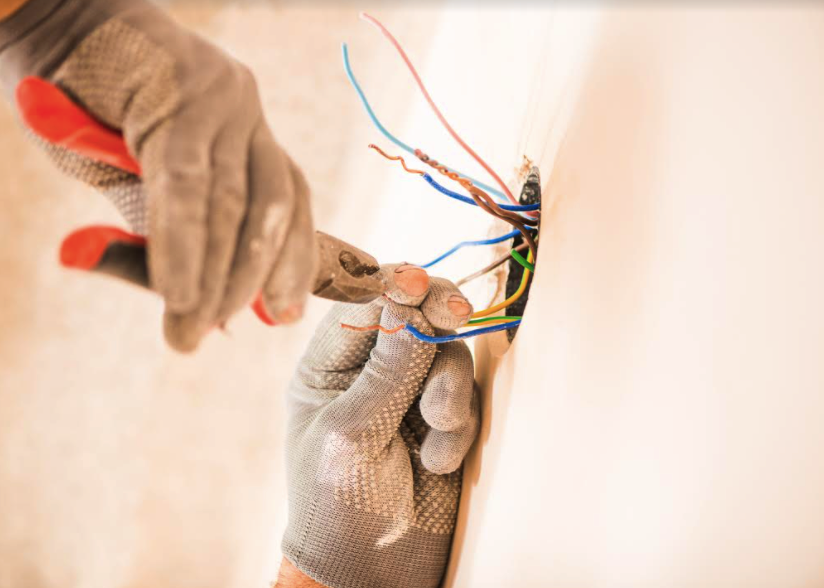
Professionals with electrician training can identify the level of insulation on a conductor by looking at the wire coding. If there’s a “W” in the coding, this means that a wire is suitable to withstand conditions of moisture. Some cables, such as UF-B cables, are manufactured specifically to withstand wet or damp conditions, protecting conductors in water-proof plastic vinyl. However, residences are commonly equipped with plastic-coated Romex cables–consisting of copper ground wire coated with paper and wrapped in neutral and live wires. This wiring is typically unable to withstand exposure to moisture due to its lower level of insulation.
How Moisture Can Harm Residential Wiring
Whenever water penetrates through the walls of a structure, whether in a liquid, frozen, vaporized or condensed form, moisture damage can occur to the residential wiring systems. Within indoor structures, many electrical components are not designed to withstand contact with water, and it’s important that electricians are familiar with elements vulnerable to water damage. Common causes of water damage in residences include burst pipes, leakage and flooding. Excessive moisture resulting from conditions such as a humid environment can also be a catalyst for milder cases of damage.
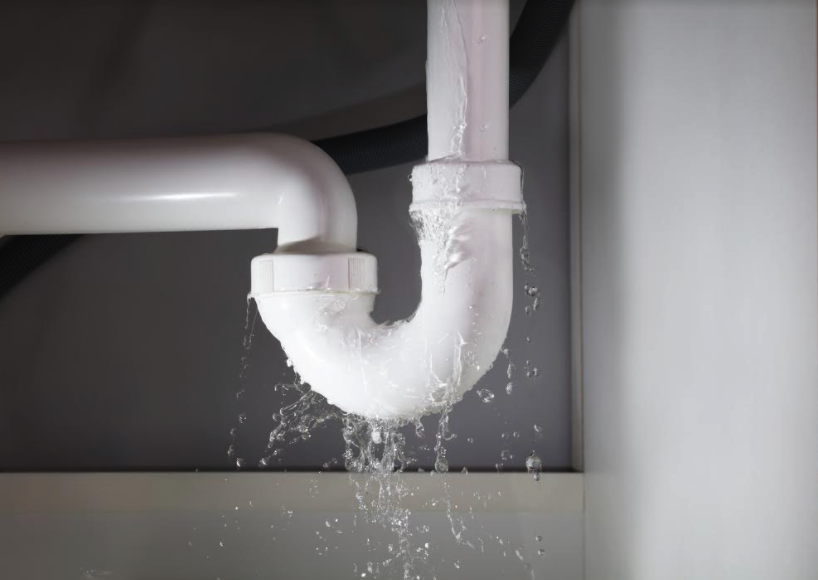
The most common effects of moisture on wiring include corrosion and mold growth. Over time, corrosion can lead to gradual deterioration of wiring components–leaving systems vulnerable to power loss or further damage. Interior electrical components are typically made more vulnerable to water contact due to the fact that they are often only protected by enamel, which is not effective in preventing water damage. As a result, moisture can cause mountings, conductors, or metal connectors to corrode. Additionally, moisture can increase the current of electrical circuits, leading to overheating and increasing the risk of a fire, or resulting in a blown fuse. When a fuse is blown, short circuiting will occur in the electrical system.
What to Do When Electrical Water Damage Occurs
For those who want to become a construction electrician, it’s important to know what to do in the case of potential water damage to a residential wiring system. If water damage is detected within a structure, it’s important to cut off electrical supply at a residence’s fuse box before inspecting any electrical circuits. Failing to do so could result in shock exposure. In the case of moisture damage, all vulnerable components should be inspected to check for areas of corrosion or mold growth. Depending on the extent of the damage, the affected area can be cut out — but it’s also possible that a new set of wiring will be required. The surrounding area should then be further insulated from moisture to protect against future harm.
In the event of flooding, all cable or wiring products that have been submerged in or exposed to floodwater should be inspected thoroughly to determine whether they can still be used. Floodwater can contain additional contaminants which can be harmful to electrical systems. With this in mind, electricians should be sure to check for foreign elements, as these can interfere with a wiring system’s ability to function.
Ready to enroll in electrician college?
Explore the North American Trade Schools’ program options today.

When smartphones hit the market, everyone seemed to want one. Now more and more people are also upgrading their houses to become smart homes–intrigued by the idea of home automation for an easier and more efficient lifestyle. If you’re interested in electrical wiring, this is a trend you might encounter. These setups can include anything from lighting and temperature automation to security and entertainment systems.
Here’s a quick overview of some key facts about smart home development.
1. Many Start Home Automation With Smart Plugs or Switches
Installing smart plugs or switches is a good way to start the home automation process. Smart plugs allow homeowners to control their smart devices using their phones—or even their voice, if smart speakers are around. Smart switches enable them to control the lighting system much more efficiently. The rise of smart devices makes this an important step, with the wiring process for both switches and plugs being fairly similar.
As an electrician, you’ll first unscrew the wall plate and begin disconnecting wires. It’s a good idea to identify all the wires involved—checking for line and load wires as well as neutral wires. Once everything is properly identified and connected, the homeowner can begin integrating smart applications seamlessly into their home. If you want to become a construction electrician, then you might also be looking to install deep junction boxes (where wires meet) during construction as well as in-wall remote control panels to influence lighting groups for a more complex lighting setup.
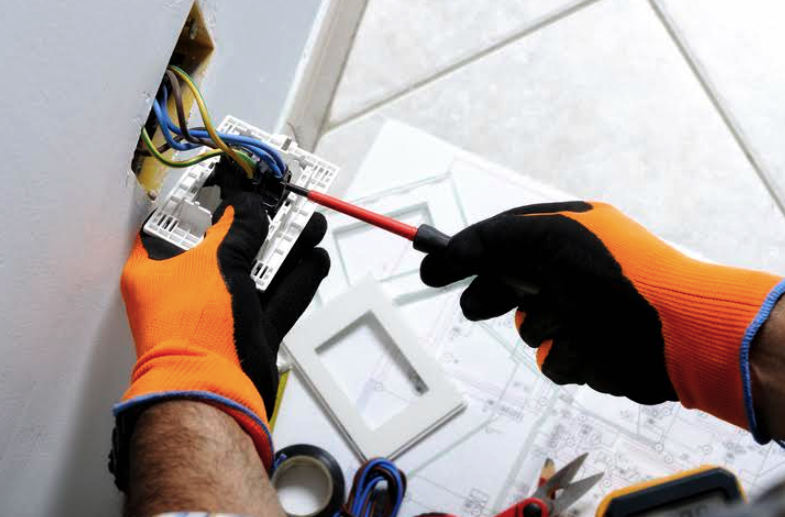
2. Home Temperatures Can Be Automated by Wiring Smart Doors and Windows
In addition to being convenient, automated doors and windows can help manage a home’s temperature during summer and winter. Smart doors can include automated garage and sliding doors–both of which can be programmed to open at a scheduled time. They can also be wired with extra sensors that indicate security risks (such as unlocked or open doors).
Smart windows can operate in the same way. They can be programmed to open or close depending on room temperature. This can be helpful to homeowners who want easier temperature regulation. As a construction electrician, you might also be interested in wiring a smart thermostat, which should be done carefully as it affects the HVAC system. Smart thermostats can give useful energy reports and control temperatures in different rooms. They also provide other features that could make smart homes a compelling option for homeowners.
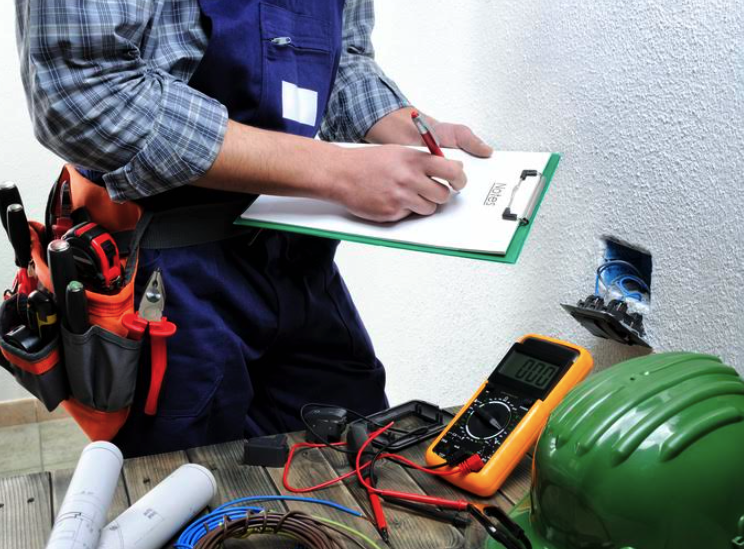
3. Those With Electrician Training Can Help Homeowners Set Up Smart Security
Home alarm systems are a big part of smart home security. Both wired and wireless systems can be used to monitor homes, detect intrusions, and even send notifications directly to an individual’s phone. Wired home security systems are permanent, while wireless systems offer more flexibility and can be easily moved around. This makes the option convenient for homeowners who frequently modify their living space. After your electrician training, you can install home security systems–linking them to motion detectors and security cameras. A wireless setup can be easily hooked into the Wi-Fi network, but wired home security requires a central control panel and some hands-on electrical wiring skills.
The opportunities for smart home development are endless, with options to add smart smoke detectors, video doorbells, and much more.
Do you want to have an electrician career in construction?
Contact NATS for more information!
Trends to Watch in 2021 for Those With Construction Careers
December 29, 2020
Within the construction industry, businesses are often looking to adopt trends that will cut costs and improve the way that business, and construction itself, is done. Advancements in technology could have a huge impact on the future of the construction industry. In 2020, the COVID-19 pandemic proved that adapting and innovating–while utilizing available technologies–was essential to continuing operations throughout the many disruptions that construction companies and employees saw.
These four rising trends highlight how the construction industry is changing and innovating–as it gives us a sneak peek into what to expect in 2021.
Those in Construction Careers Will Want to Watch for 3D Printing
3D printing is a technology that’s already being used in the construction industry to make custom projects more affordable, as well as to help complete projects at a faster rate. 3D printing is typically used to aid larger projects by building certain smaller components to fit into them. The capacities of 3D printing are still being explored, but those with a career in construction should look for this technology in 2021.
The Use of Big Data
There’s a lot of potential for the construction industry when it comes to big data. Big data is a great tool for construction companies to use to determine and analyze risk. The use of big data allows construction companies to apply algorithms to construction data, sizing a project up against market and material trends, as well as the weather. Construction companies can better manage risk with big data, as they’ll be better informed about the correct amount of resources to use. This will be better equipped for potential losses. The use of big data for risk management increased in 2020, and so there’s a good chance that it’ll continue in 2021.
Prefabricated Buildings and Modular Construction
In an era where separate space is increasingly necessary, prefabricated buildings and modular construction have come to flourish. More and more businesses are requiring temporary solutions to the social-distancing requirements and strains which have been imposed by the COVID-19 pandemic. Hospitals need extra rooms, businesses need extra offices, and homeowners might just need another space where they can work from home or decompress. Modular construction and prefabricated buildings are a great option for temporary, efficient, and affordable expansion. This is certainly a trend that could stick with the construction industry, keeping those in construction careers busy.
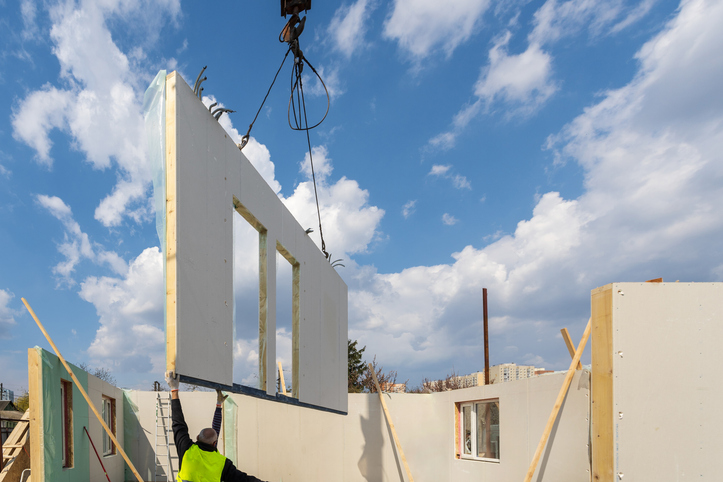
The Use of Design Technology
Building Information Modeling (BIM), or what contractors sometimes call Virtual Design and Construction (VDC), is on the rise as a means of virtually designing and constructing a building before it is physically built. It allows professionals to see how a building would hold up when constructed, making note of potential pitfalls, budgetary excesses, and more. The increasing use of this technology is helping professionals keep construction costs down and save time. By using BIM, designers are also able to think bigger and bolder in terms of the structures they create. For these reasons, it’s safe to say that the use of these helpful design technologies could continue to expand in 2021.
Are you ready to see these trends in action?
Enroll in construction college at the North American Trade School today.
3 Challenges to Expect After Electrician College, and How to Tackle Them
December 22, 2020
The job of an electrician isn’t easy. Electrical problems are a common occurrence in all kinds of structural installations, requiring anything from a simple fix to a complex solution. If not addressed, electrical issues can lead to electrical shocks, fires, or other unsafe conditions. Electricians are vital when it comes to solving electrical problems as they occur, and knowing how to fix common problems safely is essential to a job well done. Most electrical issues are caused by low-quality parts, a lack of regular maintenance, or failure to comply with codes and regulations. Fortunately, all of these problems can be fixed by a qualified electrician. If you want to become an electrician, then you’ll want to be aware of these three common challenges that electricians often face on the job, and how to handle them.
Those With Electrician Training Should Look Out for Overcrowded Electric Control Panels
Disregarding electrical codes and regulations when putting electrical systems and circuits in place can seriously increase the chances of encountering an electrical problem down the road. Once called in, a qualified electrician should be able to identify and address the problem. One common reason an electrician will be called to the scene is when a breaker or fuse is regularly tripping or blowing. A professional with electrician training will be able to identify the cause of this. Often, the cause can be an overcrowded electric control panel. Too many circuits, breakers, and wires on one control panel can cause overloading, leading to the overheating of components attached to the panel and issues with the fuse and breaker. If left unattended, overloading can cause fires. Electricians can solve this problem by switching to a panel of a larger size, and ensuring that the total load is not above the rating of the breaker or fuse. By being familiar with electrical codes and regulations, this problem can be mitigated.
Haphazard Wiring Methods
If you want to become a construction electrician, one of the main difficulties you’ll encounter throughout your career is incorrect wiring practices. Incorrect wiring practices can be identified by checking power outlets. If they are warm or emitting a burning smell, this is often a sign of faulty wiring. If the wires’ conductors are the wrong size or incorrect connections are used, this can leave wires exposed, causing the insulation to deteriorate and the wires to melt. When exposed wires come in contact with flammable or combustible material, outlets can become warm or emit a burning smell. Electricians can often fix this problem by replacing the conductor with one that is the right size for the wires.
Unsecured Connections
Loose connections refer to an electrical connection that isn’t tight enough, which can cause a buildup of heat and can increase the risk of an electrical fire. A common sign of a loose connection is the frequent flickering or burning out of light bulbs, and can even manifest in a smoke detector going off when it shouldn’t. If the frequency of this occurring is unusual, electricians may suspect that a loose connection is causing the issue rather than the light bulb itself. Loose connections can cause lasting detriment to electrical appliances and can even cause electrical fires. Electricians can solve this issue by cleaning the loose conductors and tightening the connection in concern.
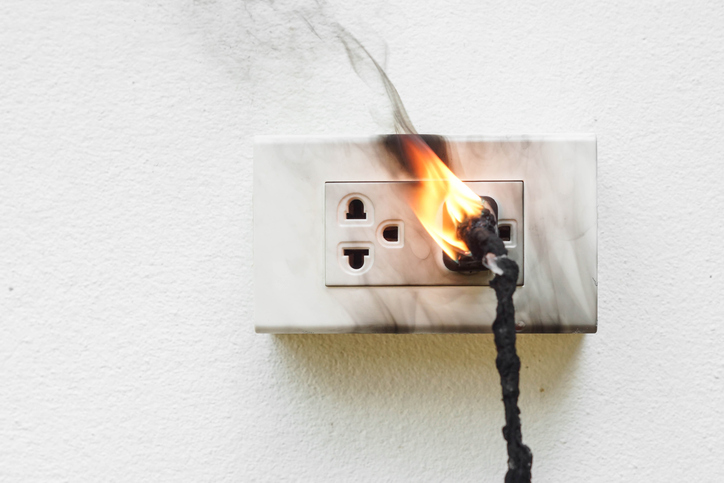
These are just some of the many problems electricians may face during a day’s work, and it’s important to be knowledgeable about the potential issues that can occur on the job in order to safely and effectively solve the problem.
Are you thinking about attending electrician college?
The North American Trade School has the program for you. Start exploring today!



